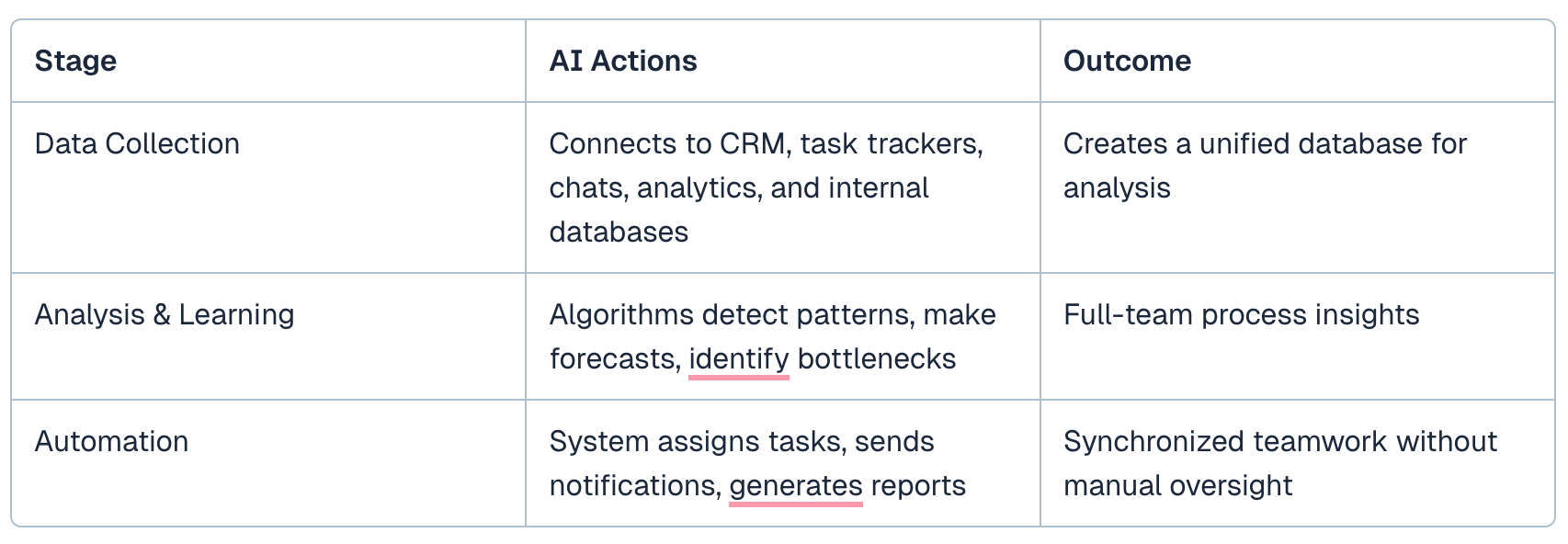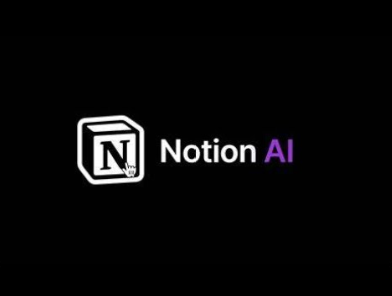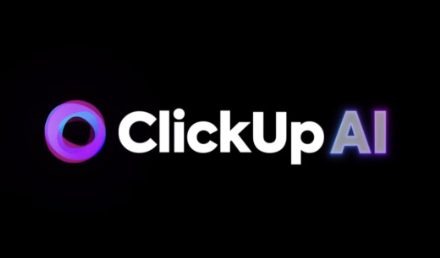Smart Workflows: Using AI to Automate Daily Tasks in Remote Teams
ByJulian Gette
Workast publisher

Workast publisher
Modern remote work isn’t just about flexibility and freedom—it also brings new complexities. Communication, tasks, reports, and data are scattered across multiple tools. Managers have to track dozens of information streams, while employees constantly switch between systems, losing focus and time.
Intelligent workflow automation powered by AI addresses these challenges comprehensively. It enables systems to learn from data, identify patterns, and optimize routine processes, freeing people to focus on more creative and strategic tasks. In digital teams, ML datasets are often used to train models enabling algorithms to predict workloads, assess campaign performance, or assign tasks based on employees’ skills. This turns automation from a simple tool into an integral part of the workflow.
Simply put, intelligent automation combines AI, ML, and task management tools. Unlike traditional automation, which only follows pre-defined actions, smart systems can adapt: they analyze past team activity, recognize patterns, and suggest optimal solutions.
For example, a system might notice that designers work faster on graphics in the morning, while analysts perform better with report reviews in the evening. The algorithm remembers these patterns, automatically distributes tasks, notifies team members about deadlines, and generates summary reports.
Remote work brings unique challenges:
Teams are spread across different time zones, sometimes spanning multiple.
Tasks live in multiple tools - from Trello and Jira to Google Sheets and Slack.
Information is often duplicated or lost between platforms.
Managers spend hours manually aligning statuses and reports.
Remote work brings unique challenges that traditional management approaches struggle to address. Teams are often distributed across multiple time zones, often spanning multiple continents, which makes real-time coordination difficult. Tasks and projects live in a patchwork of platforms—from Trello and Jira to Google Sheets, Slack, and shared drives. Critical information can be duplicated, misplaced, or simply lost between tools, creating friction and slowing progress. Managers spend hours manually aligning statuses, consolidating reports, and chasing updates, often leaving little time for strategy or creative guidance.
Intelligent workflow automation systematically solves these challenges. It consolidates tasks, communications, and project data into a unified flow that reduces repetitive manual work while remaining fully transparent and controllable. For example, a marketing team running multiple campaigns across regions can benefit from automated task allocation: the system can identify when deadlines overlap, balance workloads, and alert team members before bottlenecks occur. Similarly, for designers or analysts, automated reminders, status updates, and report generation free up valuable time for creative and analytical work rather than administrative overhead.
By leveraging structured datasets and historical performance metrics, these systems can also predict periods of overload, suggesting adjustments to timelines or resource allocation before issues arise. The outcome is a smoother workflow: employees spend less time on routine administrative tasks, managers gain actionable insights without manual data crunching, and the overall pace and quality of decision-making improve noticeably.
In essence, intelligent workflow automation doesn’t just move tasks faster—it creates an environment where teams can focus on outcomes rather than processes, fostering productivity, accountability, and even job satisfaction across distributed teams.
Implementing AI into workflows can be broken into three main stages:
Importantly, the quality of predictions and task allocation depends directly on the data. Using verified, structured ML datasets allows algorithms to learn from representative samples, improving forecast accuracy and action reliability.
By automating routine tasks, teams can allocate their time and resources to more critical activities. For example, AI can handle data entry, schedule meetings, and manage emails, allowing team members to focus on strategic planning and creative problem-solving.
Human errors are inevitable, especially when handling repetitive tasks. AI systems, however, can perform these tasks with high precision, reducing the likelihood of mistakes and ensuring consistent outcomes.
As businesses grow, so do their operational demands. AI smart workflow automation systems can easily scale to accommodate increased workloads without the need for proportional increases in human resources.
AI can analyze data in real-time, providing teams with actionable insights that can inform decision-making processes. This is particularly beneficial in dynamic environments where timely decisions are crucial.
By reducing the need for manual labor and minimizing errors, businesses can achieve significant cost savings. Additionally, AI systems can operate 24/7, further enhancing productivity without incurring additional costs.
Marketing and content planning AI analyzes past campaign performance, identifies which topics and formats resonate most, and suggests an optimal content plan. It can also determine the best posting times and assign tasks within the team. ML datasets help algorithms account for seasonality, topic relevance, and audience behavior, maximizing content ROI.
Customer support AI in chat and CRM systems classifies requests by priority, automatically answers standard questions, and generates customer satisfaction reports. By analyzing historical data, the algorithm predicts which issues need urgent human intervention and notifies the manager.
Project management Intelligent systems monitor task completion speed and forecast project timelines. If a stage is consistently delayed, the system recommends task redistribution and notifies responsible team members, preventing downtime and missed deadlines.
Advertising analytics AI identifies which campaigns are performing well and which need adjustment. ML datasets enable the algorithm to detect audience behavior patterns, reallocate budgets, and forecast conversions accurately.
Notion AI — Intelligent Workspace and Knowledge Hub
Functionality:
Generates and summarizes meeting notes.
Auto-suggests to-do lists from text content.
Answers natural language queries about project docs.
Classifies and tags content across teams.
Use Case: Remote marketing teams use Notion AI to instantly summarize weekly planning notes, extract action points, and distribute them to relevant boards. Instead of manually sorting content, AI organizes all updates under each campaign—automatically.
Benefit: Saves up to 4 hours per week on information structuring and task follow-up.
ClickUp AI — Smart Task and Workflow Management
Functionality:
Auto-generates subtasks based on project goals.
Converts messages into actionable tickets.
Suggests task priorities based on workload balance.
Creates automated sprint reports.
Use Case: A software team connects ClickUp AI to Slack. When a new feature idea appears in chat, AI creates a task, assigns the relevant developer, and updates project timelines.
Benefit: Reduces miscommunication and speeds up hand-offs between departments.
Zapier AI Actions — Custom Cross-App Automations
Functionality:
Connects 6,000+ apps (Trello, Gmail, Slack, Google Sheets, etc.).
AI interprets natural-language prompts to create “Zaps” (automated workflows).
Supports data enrichment, classification, and routing.
Use Case: A sales manager says, “When a new lead is added in HubSpot, send a Slack message and log it in Google Sheets.” Zapier AI instantly builds this integration — no coding needed.
Benefit: Automates repetitive administrative work and centralizes data flow across remote tools.
Power BI Copilot — Automated Analytics and Insights Functionality:
Generates visual reports from natural-language queries.
Detects performance trends and anomalies in real time.
Integrates with Excel, Teams, and SQL databases.
Use Case: Remote financial teams use Copilot to ask “Show sales trends by region this quarter.” AI builds a clean dashboard, interprets growth spikes, and flags outliers.
Benefit: Removes manual chart creation and data wrangling — letting teams focus on strategic analysis.
Workast — Task Management and Automated Team Coordination Functionality:
Generates workflows from natural-language prompts.
Centralizes tasks, projects, and workflows directly inside Slack or as a standalone app.
Automates reminders, due-date notifications, and recurring tasks.
Tracks team activity, workload, and project progress in real time.
Integrates with tools like Google Workspace, calendar apps, and communication platforms.
Use Case: A remote operations team uses Workast to automate routine follow-ups: when a task is overdue, Workast automatically pings the responsible team member in Slack. When a project stage is completed, Workast updates the workflow, assigns the next task, and notifies the relevant stakeholders—no manual coordination required.
Benefit: Reduces administrative back-and-forth, keeps remote teams aligned, and increases productivity by ensuring that no task or update gets lost across tools.
Intelligent workflow automation powered by AI is not a trendy technology—it’s a practical way to improve productivity and work quality for remote teams. It frees people from routine, enhances process transparency, and enables data-driven decisions.
Incorporating ML datasets makes algorithms more accurate and teamwork more predictable and efficient.






